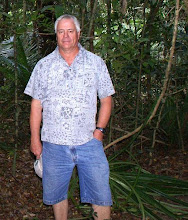Bagasse is the fibrous residue remaining after crushing/shredding sugarcane and washing the sugar out of it. Bagasse provides the power required to run the sugarcane mills that process the sugar from sugarcane, thus making sugar production from sugarcane one of the most energy efficient operations in the plant crop world. In Florida and Hawaii, energy derived from burning bagasse not only powers the mills, but is also sold to the public as electricity. This is referred to as co-generation. When burned in the mill boilers, the energy derived from one ton of bagasse is roughly equivalent to the energy obtainable from one barrel of oil. In Louisana, electricity is still too inexpensive for mill owners to make a profit burning the excess bagasse, generating electricity and selling it to the public.
Now that the sugarcane harvest season is over, and mill yards are no longer obscured by standing cane, one is struck by the huge piles of bagasse that build up next to them. The photo above was taken of the mill yard at Raceland Sugar Co., Raceland, LA, from Hwy 90 (future I-49) overpass over Hwy 1 after most of the cane was harvested, and after the occurrence of a killing freeze on Dec. 15. Note how the massive bagasse piles obscure the view of the mill. One needs only to drive next to these piles of bagasse to appreciate just how massive they really are. A list of Louisiana's mills and their locations is found on the website of the American Sugar Cane League.
In the green fuels debate, there has been much discussion about conversion of fibrous residue from plant products into cellulosic ethanol. It would seem that, if cellulosic ethanol production or the production of some other fuel, such as butanol, from plant fiber is close to becoming economically viable, a great place to test its potential is in an already existing industry where the fibrous residue is a by-product that has already been gathered into central locations. One issue facing sugarcane breeders, and ultimately the sugar industry, is whether it is an asset or a liability to the industry to develop and release sugarcane varieties possessing higher fiber levels than the current standard of 11-12%. Perhaps it is a question that gets answered differently depending on whether we are taking the short-range or the long-range view.
Subscribe to:
Post Comments (Atom)


No comments:
Post a Comment